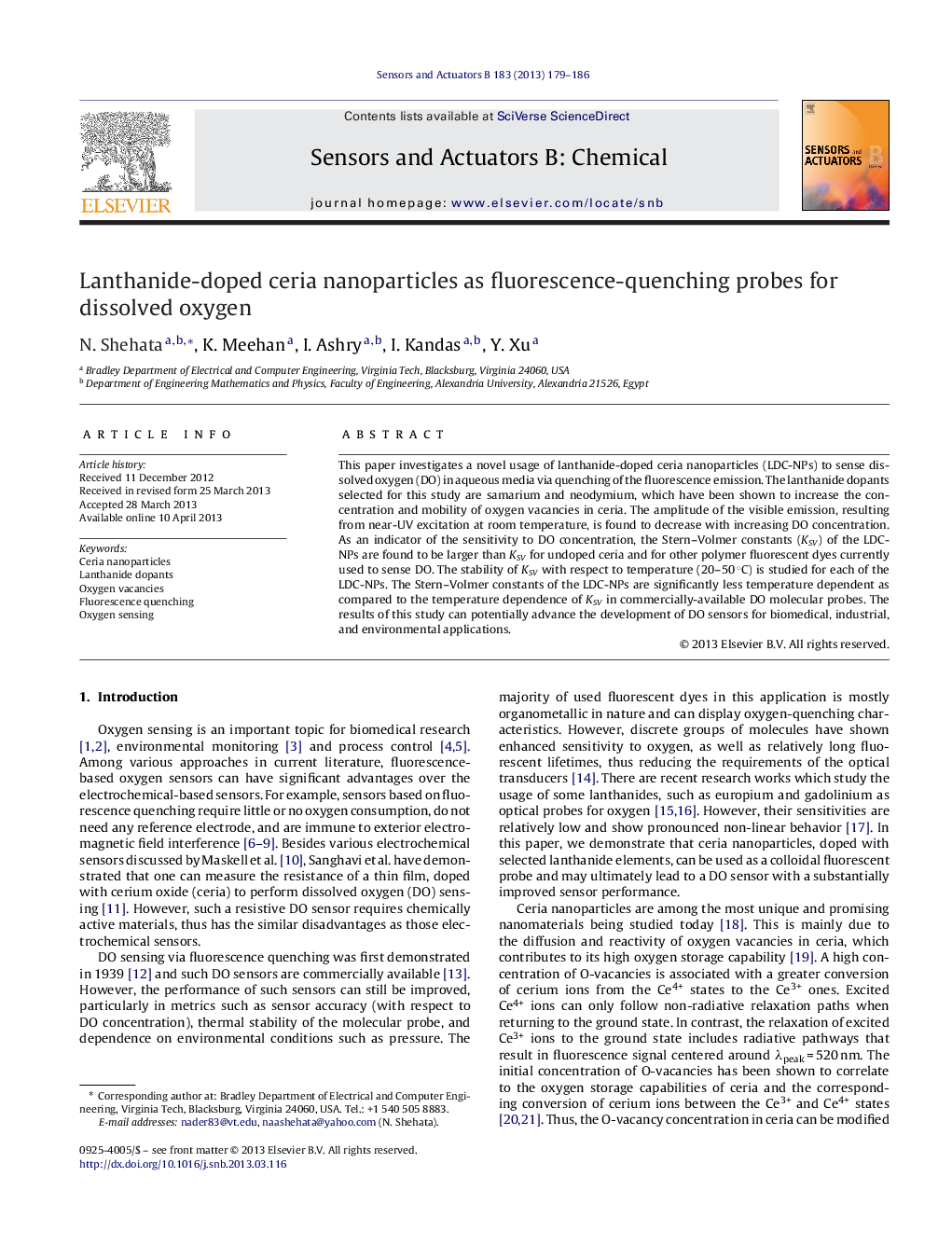| Article ID | Journal | Published Year | Pages | File Type |
|---|---|---|---|---|
| 743041 | Sensors and Actuators B: Chemical | 2013 | 8 Pages |
This paper investigates a novel usage of lanthanide-doped ceria nanoparticles (LDC-NPs) to sense dissolved oxygen (DO) in aqueous media via quenching of the fluorescence emission. The lanthanide dopants selected for this study are samarium and neodymium, which have been shown to increase the concentration and mobility of oxygen vacancies in ceria. The amplitude of the visible emission, resulting from near-UV excitation at room temperature, is found to decrease with increasing DO concentration. As an indicator of the sensitivity to DO concentration, the Stern–Volmer constants (KSV) of the LDC-NPs are found to be larger than KSV for undoped ceria and for other polymer fluorescent dyes currently used to sense DO. The stability of KSV with respect to temperature (20–50 °C) is studied for each of the LDC-NPs. The Stern–Volmer constants of the LDC-NPs are significantly less temperature dependent as compared to the temperature dependence of KSV in commercially-available DO molecular probes. The results of this study can potentially advance the development of DO sensors for biomedical, industrial, and environmental applications.
